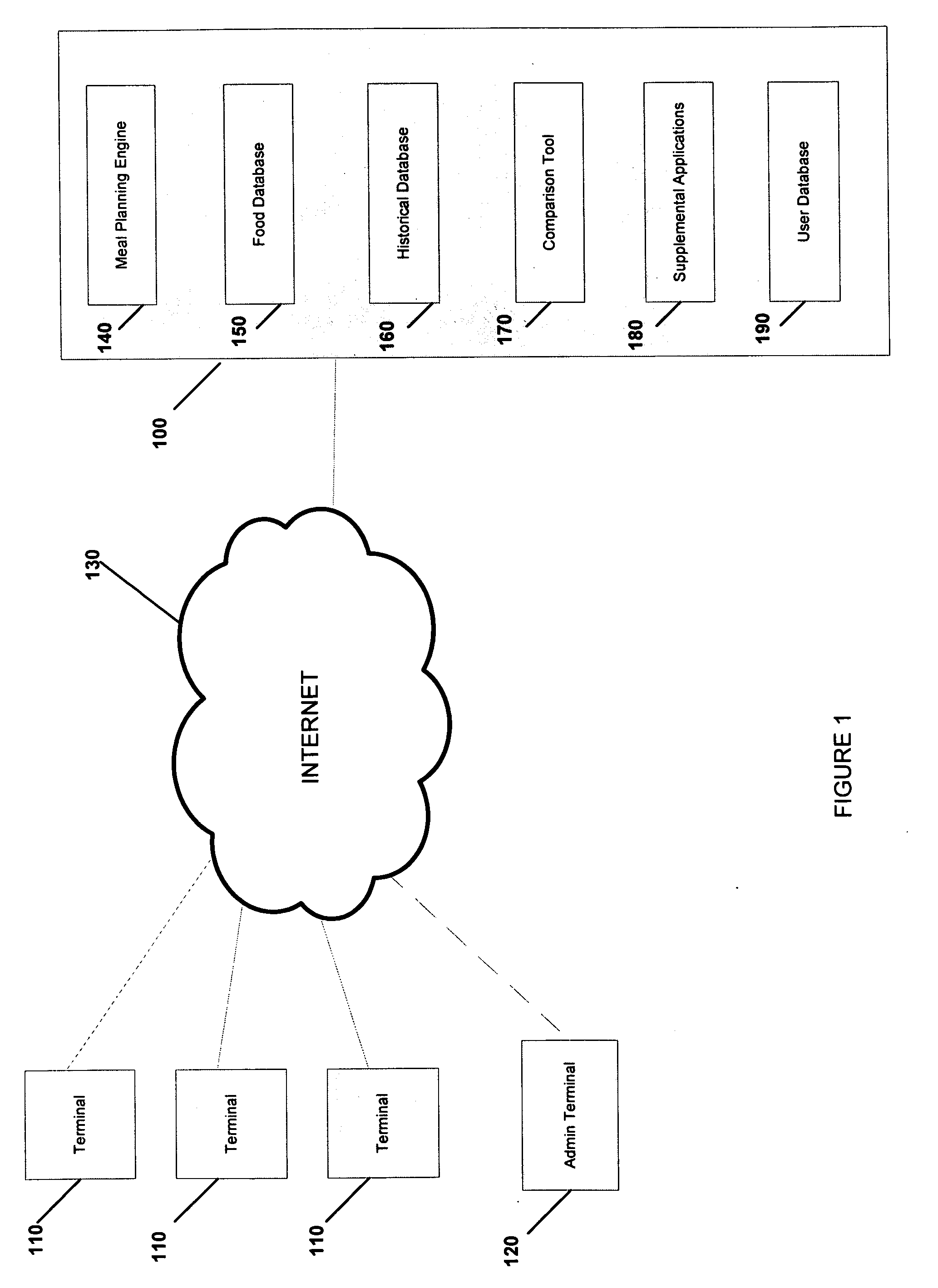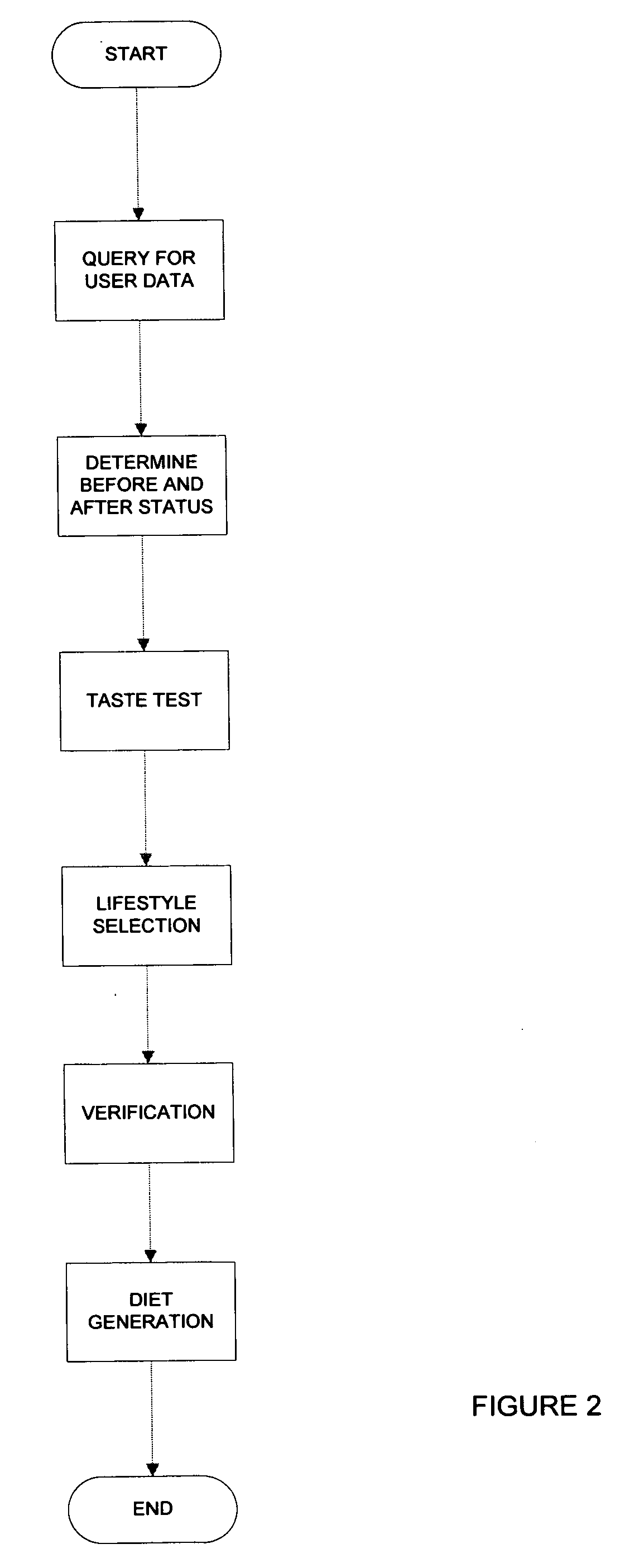System and method for automated dietary planning
a dietary plan and automatic technology, applied in the field of diet, nutrition, meal and medical treatment planning, can solve the problems of not taking into account the application, the application is typically not responsive to the needs of patients, and the excess weight and the various resulting health complications are becoming epidemic proportions
- Summary
- Abstract
- Description
- Claims
- Application Information
AI Technical Summary
Benefits of technology
Problems solved by technology
Method used
Image
Examples
Embodiment Construction
[0039] The present invention for automated dietary planning is now described. The present invention comprises a system for generating meal plans which are customized based upon a number of unique characteristics specific to the dieter or group of dieters. The present invention further comprises a process therefor. In the description that follows, numerous specific details are set forth for the purposes of explanation. It will, however, be understood by one of skill in the art that the invention is not limited thereto and that the invention can be practiced without such specific details and / or substitutes therefor. The present invention is limited only by the appended claims and may include various other embodiments which are not particularly described herein but which remain within the scope and spirit of the present invention.
[0040]FIG. 1 is a block diagram of the system of the present invention in a preferred embodiment thereof. According to this preferred embodiment, one or more...
PUM
 Login to View More
Login to View More Abstract
Description
Claims
Application Information
 Login to View More
Login to View More - R&D
- Intellectual Property
- Life Sciences
- Materials
- Tech Scout
- Unparalleled Data Quality
- Higher Quality Content
- 60% Fewer Hallucinations
Browse by: Latest US Patents, China's latest patents, Technical Efficacy Thesaurus, Application Domain, Technology Topic, Popular Technical Reports.
© 2025 PatSnap. All rights reserved.Legal|Privacy policy|Modern Slavery Act Transparency Statement|Sitemap|About US| Contact US: help@patsnap.com



